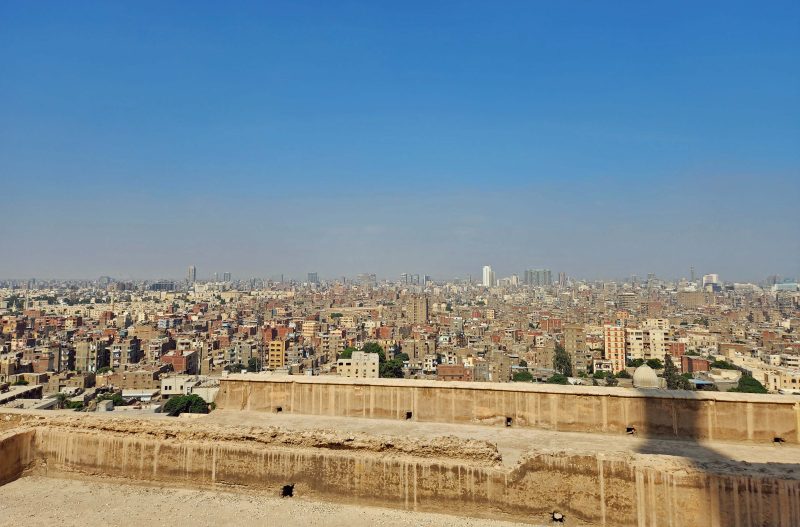Our tour group of 22 people flew together from Tel Aviv to Cairo today for our first of four days in that area. At our hotel, we were joined by 58 more people who were taking the eight-day Nile River cruise with us.
The flight was smooth and on time, but not without problems. One of the two airports managed to tear the main handle off my suitcase and lost my luggage ID tags as well. Yes, they stripped the bolt out of the wooden frame of my lifetime-guaranteed suitcase. I’m not worried about the repair; I can have that done at no cost at a shop that’s about 15 minutes from our house. The annoying part of this is that we have eight flights on the BT and this was only the third one, so I’m stuck with a suitcase with a missing handle for five more flights. At least the telescoping handle for rolling the suitcase still works, so once I pick up the suitcase, I can still haul it around. This isn’t the kind of adventure I was anticipating on the BT, but stuff happens and travel goes on.
We were taken directly from the airport to our hotel in Cairo, and I took this photo of the Nile River and the city from our hotel room. I couldn’t believe it! I was in the exotic country of Egypt right across the street from the iconic Nile River—the longest river in the world.
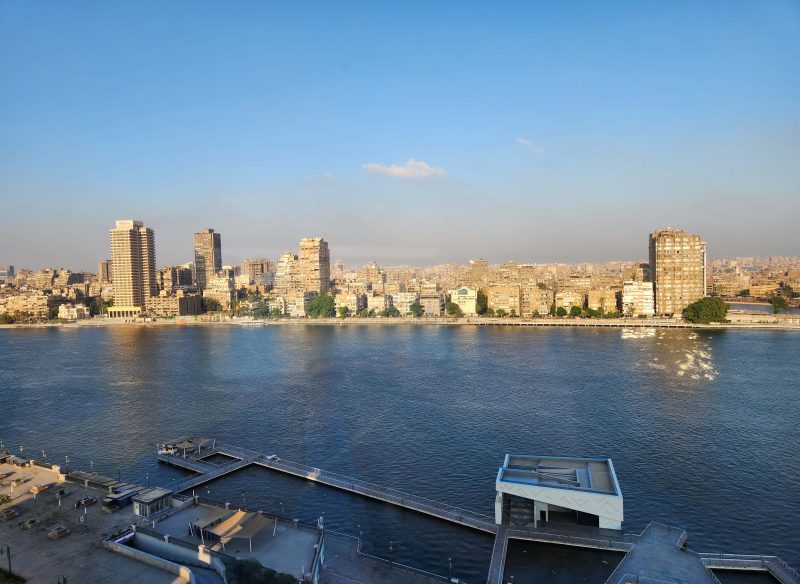
The furniture in the hotel room clearly said “Egypt.” Notice that there’s a handy ashtray on the table. I don’t think any of the 32 countries Ted and I have visited has smoking laws as strict as those in the U.S. It’s so odd to be in public rooms with smokers and to have ashtrays wherever someone might wish to sit down to smoke.
Note: The hotel staff was so attentive that, when I sneezed at dinner, a server brought a box of tissues to me in less time than it took me to get one out of my purse! When we asked staff members for directions to particular places (rest room, dining room, elevator), they not only gave us directions, but also escorted us so they could open the door and/or press the elevator button for us.
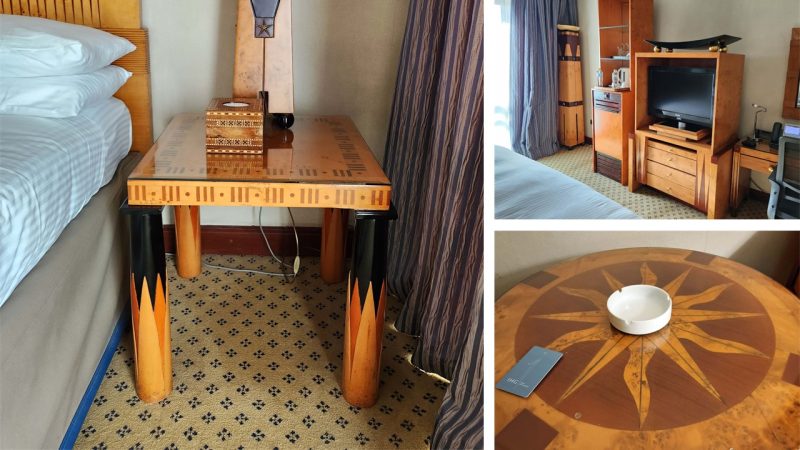
After a good night’s sleep and some breakfast, we headed for our tour meeting place and were introduced to our Egyptian guide, Hanan. Hanan is a dual citizen of Egypt and the U.S. Her archeology degrees specialize in Egyptology, and she has participated in a variety of archeological excavations in Egypt, including some that we will visit. Her passion for archeology and the depth of her knowledge of Egypt are astounding.
While our group was getting acquainted with Hanan, the other 66 travelers in our enlarged group were divided into two groups and were being introduced to their guides. Thereafter, we became groups A (us), B, and C for the remainder of our time in Egypt. It was nice because the groups were small enough to make good friends during the time we spent together in Egypt, plus the additional four days in Israel for group A. Then we were introduced to our bus driver, whose name was Muhammed Ali, and to our security guard, also named Muhammed–the most common name in Egypt. I wonder what the odds are that you can walk up to an Egyptian man, say, “Hi there, Muhammed,” and be right. Again, as in Israel, we were told not to drink the water or to use it to brush our teeth. Egyptians can drink it because they do so from birth and their bodies have adjusted to it.
After the group assignments and the introductions, we started our sightseeing in Cairo at the Museum of Egyptian Antiquities (aka the Egyptian Museum). The photo below shows a replica of the Rosetta Stone. Like many archeological artifacts from Egypt, the original Rosetta Stone is owned by another country. In this case (and many others), it is in the British Museum. The Rosetta Stone was the key to understanding Egyptian hieroglyphics.
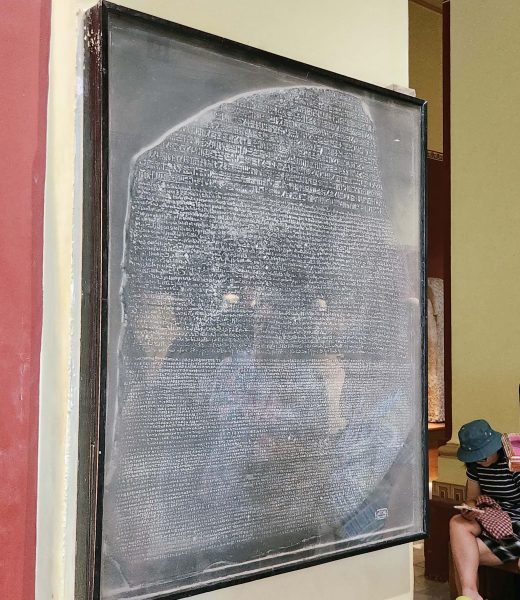
Below, you can see the sarcophagus of Akhenaten, an ancient pharaoh of Egypt who reigned in the mid-1300s BCE. He was the husband of Nefertiti and the father of King Tut.
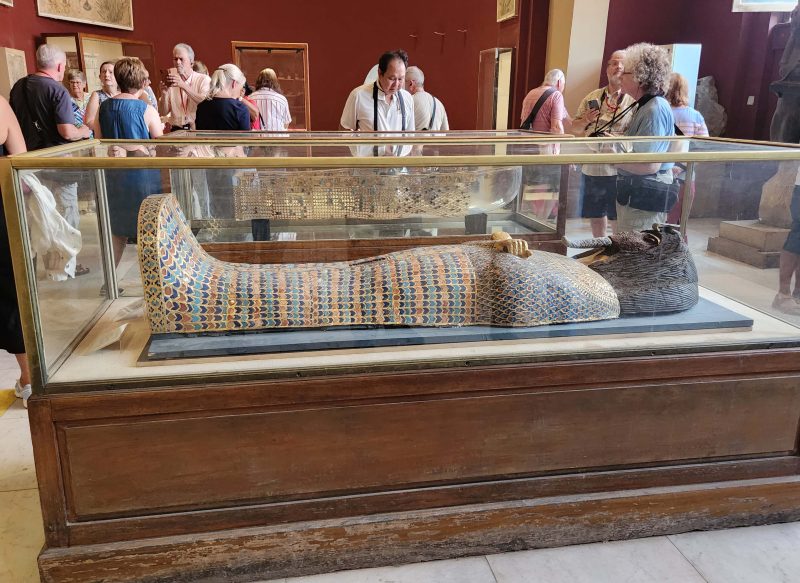
The statues of Rahotep and Nofret (below) are idealized to represent them as eternally youthful. This is typical of most Egyptian sculptures. Rahotep was a high official in the government in the mid-2500s BCE and Nofret is described as “known to the king.” They had six children, so I’m guessing she was probably well-known to the king.

The statue shown below is King Khafre. He is thought to have commissioned the Great Pyramids of Giza, one of the Seven Wonders of the Ancient World.
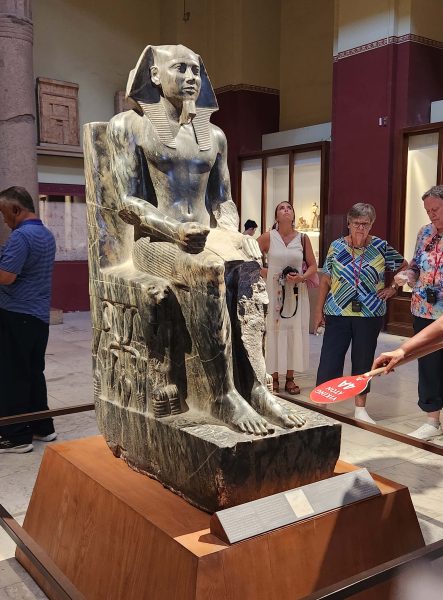
The interesting part of this statue is that, when you look at it from behind, you discover that what looks like his headpiece is actually the falcon god Horus, protecting the back of the king’s head. Horus cannot be seen from the front, indicating that Khafre is not only protected by the gods, but is a god himself. Talk about having an ego!

The little chair in the glass case in the photo below is King Tutankhamen’s chair. He became king when he was only 9 years old, and he died at the age of 19. The most memorable action of his reign was to reverse all the religious changes made by his predecessor and father, Akhenaten (the sarcophagus above). He is usually referred to as King Tut, and his fame is largely due to the fact that his is the only royal tomb found intact in modern times. An entire room in this museum is dedicated to artifacts of King Tut (mostly done in gold), but guests are not allowed to take photos in that room.

The Citadel of Salah el Din was built in 1176 A.D. and is still used by the Egyptian military today. It was the seat of government and the residence of Egypt’s rulers for 700 years. It dominates the Cairo skyline, and includes the Mosque of Muhammad Ali, known for its gleaming alabaster interiors.
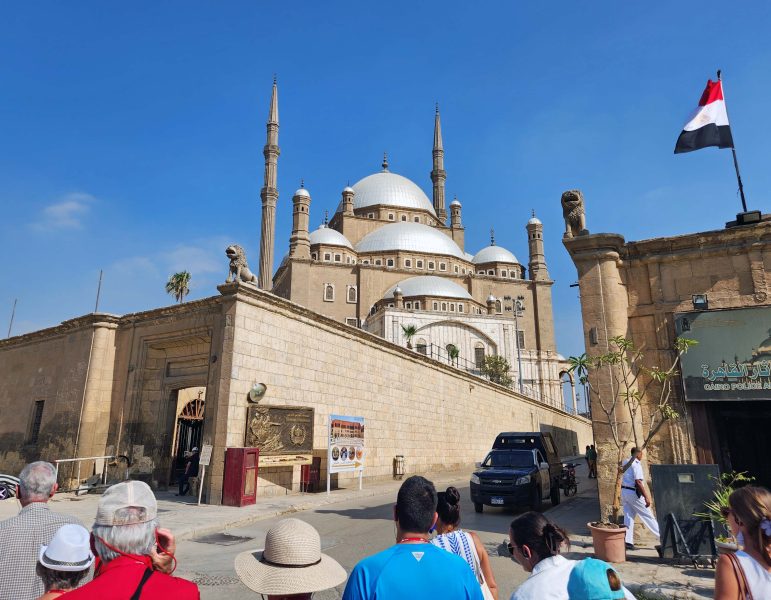
Here’s a picture of the central courtyard of the mosque.
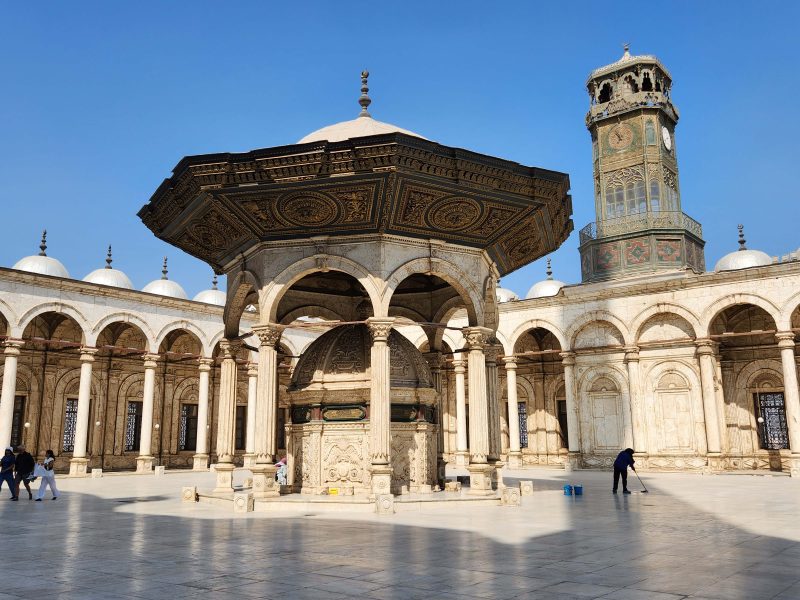
In the main worship space of the mosque, there are 365 single-globe lights arranged in rings—one for each day of the year.
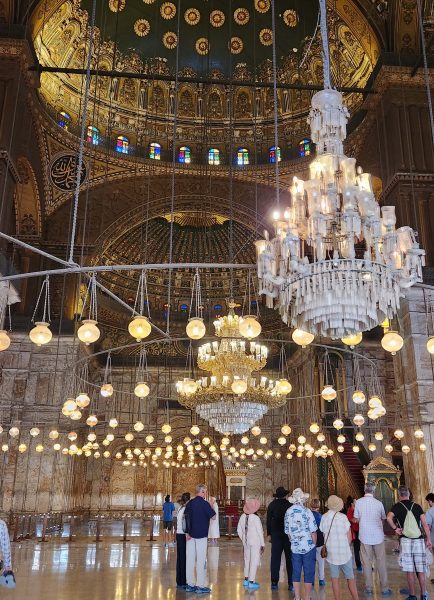
Because the Citadel is set at the highest point of the city, its upper wall provides a broad view of Cairo.
